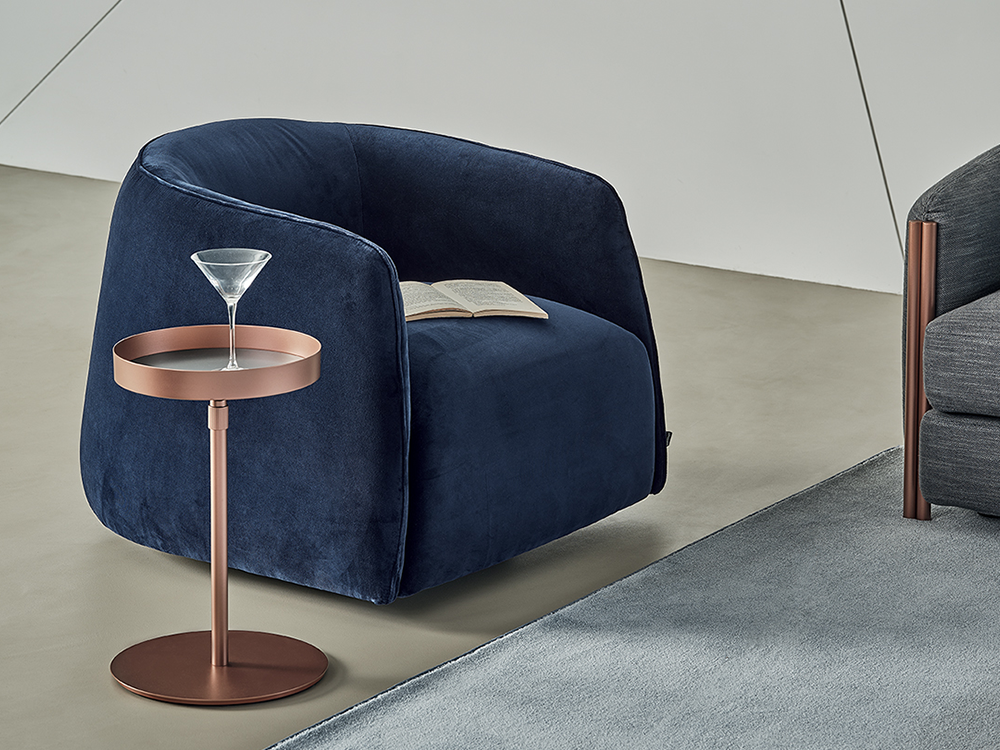Glass, or crystal, has been used in the furniture world for centuries. Thanks to its functional, aesthetic and design qualities, such as transparency, brightness and solidity, crystal is a distinctive element of style. But not only, the anti-scratch velvet crystal of Bontempi Casa is an elegant and refined alternative: the surfaces are in fact soft and velvety to the touch, refined and elegant to the eye, but at the same time resistant to scratches.
Thanks to its aesthetic, functional and design qualities – transparency, brightness and solidity – glass is the material that distinguishes the style of each piece of furniture. When worked, glass becomes crystal and, when used in interior design, it promotes brightness and communication between the rooms. In fact, a crystal partition made to perfection contributes to the exploitation of natural light and visual continuity. That’s why a crystal furniture is always impactful and very pleasing to the eye: it is ample, clear and delicate, whatever the circumstances.

The history of crystal in the world of furniture begins in the mists of time: according to a story by Pliny, the crystal was discovered by chance by some Phoenician merchants in 500 B.C., when they were looking for a fairly durable top to carry very heavy objects. Around 100 B.C. the Romans developed the blowing technique inside the molds to create crystal artefacts. Only in 500/600 A.C. a new process was invented to make glass tops. Since then, crystal is one of the most popular materials in the furniture industry.
The refinement of transparent crystal has few equals: smooth and perfect, with a see-through and mirror effect, a transparent crystal table is the turning point for a kings and queens living room. If the shiny crystal is black, the combination with gold finishes completes the sublime combination.



But it is not just transparencies that make the crystal a special and unique material. The scratch-resistant velvet crystal, for example, is a type of glass patented by Bontempi Casa that combines the durable and resistant qualities of the crystal with the elegance and refinement of an opaque and velvety surface.
The scratch-resistant velvet crystal is in fact characterized by a matte finish that makes it warm, pleasant and soft to the touch, almost like it was slightly velvety. The crystal used in this processing is subjected to a special chemical-physical treatment, that thanks to a latest generation technology makes it more difficult to form scratches, usually more evident on smooth surfaces. In short, a true portent of durability and integrity, as well as an example of grace and beauty.

To clean these opaque glass tops, it is advisable to work with a soft cloth and active glass and crystal foam. It is not necessary to spray the product directly on the surface, but on the cloth, to obtain greater effectiveness. The recommendations of the Bontempi Casa team are also not to use oily products, greases or thinners, and in the event that particularly aggressive or staining liquids are poured onto the surface – such as wine, soda drinks, fruit juices, lemon, vinegar, etc. – the liquid must be removed immediately with a soft cloth and active glass and crystal foam. Just follow these simple and quick tips to keep the surface of the glass top intact, be it transparent or opaque.
Crystal tables are the perfect solution for sitting rooms and living rooms, but also for offices and waiting rooms. Their elegant surfaces are combined with all styles of furniture, they are very solid and long lasting. The millennial history of the crystal also makes it a unique material, that brings with it pieces of the past, art, craftsmanship and a look always awaiting the future of design. In fact, more and more designers and architects are exploiting the aesthetic and functional qualities of this natural element, whose malleability is as extraordinary as the result of the finished product.










